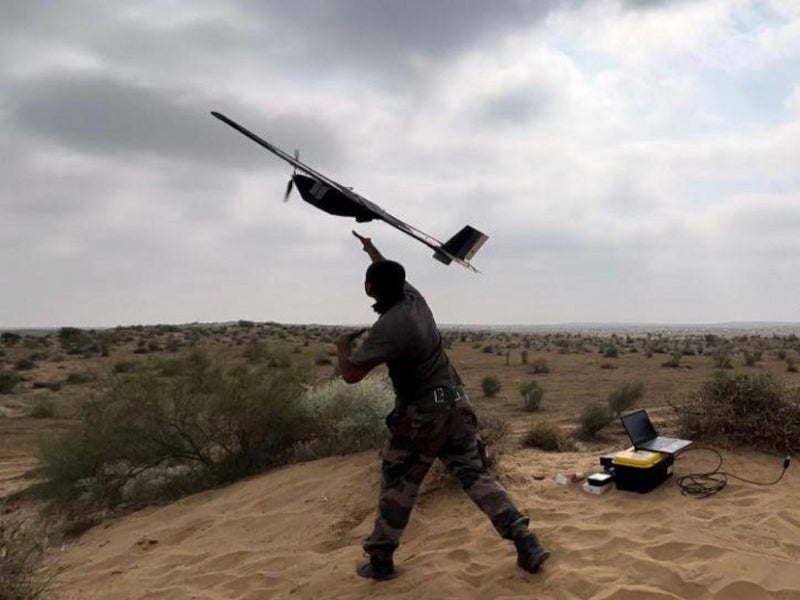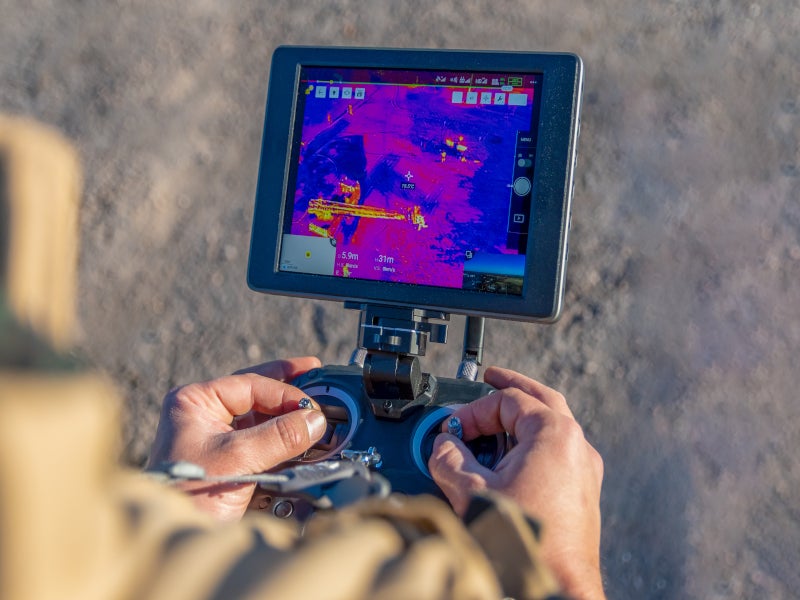Johnnette JF-2 is a lightweight, hand-launched, fixed-wing uncrewed aerial vehicle (UAV) designed for intelligence, surveillance and reconnaissance (ISR) operations.
The drone was developed by Johnnette Technologies, an uncrewed systems manufacturer based in India.
The design of the Johnnette JF-2 drone was officially registered with the Patent Office of the Government of India in October 2023.
Johnnette JF-2 design and features
Johnnette JF-2 is a cost-effective, stealthy, man-portable soldier drone. It measures 1.4m in length, and 0.3m in height and has a wingspan of 2.4m. The drone weighs up to 5kg and features an automatic take-off system.
The drone is constructed from a blend of expanded polypropylene (EPP) and composite materials for durability. It is a rugged, crash-resistant drone for extended reliable use in harsh environments.
The drone’s belly-landing capability ensures it can withstand impacts across various terrains.
Johnnette JF-2 supports both autonomous and assisted flight modes and includes multiple failsafe options, such as return to home on low battery and communication loss. Its low radar cross section (RCS) renders it undetectable to enemy radar.
Avionics of Johnnette JF-2
The Johnnette JF-2 is equipped with a crash-proof avionics bay and features anti-jamming and anti-spoofing technologies, making it a prime choice for land forces.
Performance of Johnnette JF-2
The electrically propelled drone can ascend to altitudes between 300m and 600m, cruising at 40km/h, with a maximum speed of 60km/h.
It can fly up to a range of 15km and has an endurance of up to 90 minutes. It has been tested on the field to efficiently operate at temperatures ranging between -10°C and 50°C.
Communication capabilities
High-definition (HD) live video streaming and real-time data link capabilities are integral to the UAV’s communication system.
Ground control station aboard Johnnette JF-2
The drone’s robust intelligent ground control station has a military standard (MIL-STD) all-weather laptop integrated with the company’s software- Johnnette GCS (closed source) encrypted.
Payloads of Johnnette JF-2
Johnnette JF-2 payloads include a high-definition Gimballed 1080p day camera with 10× optical zoom and a 640p thermal camera with 4× digital zoom, which makes it ideal for day and night operations. The day and night payloads are swappable.
Day payload features
The day camera features a 1/3in Panasonic complementary metal-oxide-semiconductor (CMOS) sensor, which offers a full HD 1080 (1,920×1,080 pixels) image quality. It features defogging capabilities.
The camera features an update rate of deviation pixel at 50Hz and an output delay of less than ten milliseconds, ensuring swift and responsive performance. It can detect objects with a minimum contrast of 5%, supported by a signal-to-noise ratio (SNR) of four.
The camera accommodates a minimum object size of 32×32 pixels and a maximum object size of 128×128 pixels, providing versatility in object detection.
Additionally, it offers a tracking speed ranging from ±48 to ±192 pixels per frame, making it well-suited for dynamic environments and applications requiring precise tracking capabilities.
Thermal payload features
The thermal camera features a 19mm lens and an uncooled long wave (8μm~14μm) thermal imager which provides high-quality images.
The detector provides pictures sized 640×480 pixels with a colour palette ranging from white, and iron red to pseudo colour. It can detect and recognise a man at distances of 559m and 140m, respectively, and verify the person at 70m.
For vehicles, the detection, recognition, and verification ranges are 1,714m, 428m, and 214m, respectively.
Orders and deliveries of Johnnette JF-2 drones
The Indian Army received its first batch of Johnnette JF-2 drones in July 2019.
An additional order was placed by the Indian Army in December 2023 for border surveillance purposes, following a successful demonstration in September 2022 that assessed the platform’s feasibility. The drones were delivered to the Indian Army in June 2024.





